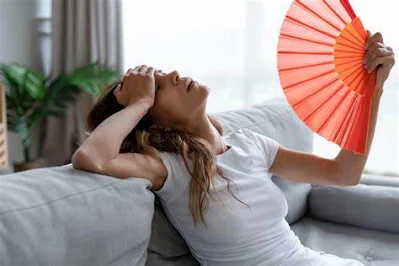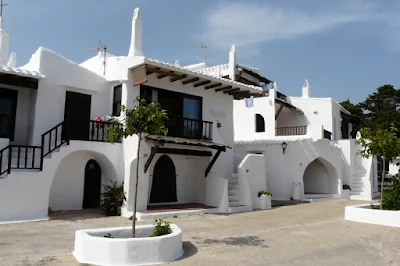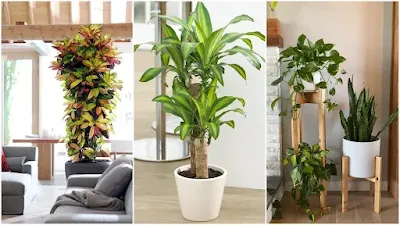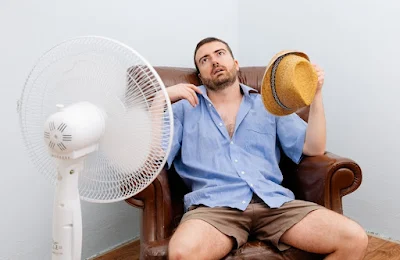How to keep your home cool when it's hot (without air conditioning)
When temperatures rise, keeping your home cool can be a challenge.
However, there are some measures we can take to reduce heat and improve thermal comfort without resorting to air conditioning.
 |
| How to keep your home cool when it's hot (without air conditioning) |
Take advantage of the coldest hours of the day to ventilate the house
It is recommended to open the windows early in the morning and at night, when the outside air is cooler than inside. This renews the air and eliminates accumulated heat.
Here are some key points about this practice:
- Early Morning Ventilation: During the night, the outside temperature often drops, making the air cooler in the early morning hours. Opening windows and doors at this time allows that cool air into the house, replacing the warmer indoor air.
- Night Ventilation: Similarly, at night, when the temperature drops again, it is a good idea to open the windows again to allow fresh air to circulate and replace the warm air that has accumulated during the day.
- Cross ventilation: If possible, try to create a draft by opening opposite windows for cross ventilation. This allows air to flow through the house, carrying away heat and improving air circulation.
- Avoid the hottest hours: During the hottest hours of the day, generally in the afternoon, it is advisable to keep the windows closed and the curtains or blinds down to prevent outside heat from entering the house.
- Ventilate in sunny rooms: If you have rooms that receive a lot of direct sunlight, it is especially important to ventilate them during the cooler hours of the day to reduce heat build-up.
Remember that the effectiveness of this method can vary depending on the climate and geographic location. In areas with high temperatures or excessive humidity, this strategy may be more effective during the warmer seasons. However, in general, it is a best practice to improve the air quality in your home and help keep it cooler during the summer.
Close the blinds, curtains or awnings during the hours of greatest insolation.
This prevents the sun's rays from falling directly on the windows and heating the environment. It is estimated that this measure can reduce the interior temperature by up to 30%. This measure helps to block direct sunlight that falls on the windows, thus preventing the environment from heating up excessively. Here are some additional considerations about this practice:
- Radiation reflection: By closing the blinds, curtains or awnings, the amount of solar radiation that enters the interior of the house is reduced. This prevents the furniture, floors and walls from absorbing heat and helps keep the environment cooler.
- Thermal insulation: In addition to preventing the direct entry of solar radiation, the closing of blinds and curtains can also provide a certain level of thermal insulation. This means that the heat accumulated inside is retained to a lesser extent and the environment remains more comfortable.
- Efficient use of air conditioning: By blocking outside heat, it reduces the need for excessive use of air conditioning during the hottest hours of the day. This can translate into energy savings and a lower electricity bill.
- Opening in the coolest hours: As we mentioned before, you can take advantage of the ventilation early in the morning and at night, when the outside air is cooler, to renew the inside air. By closing the blinds during the hottest hours, cool air is retained and prevents it from heating up quickly.
In combination with adequate ventilation, closing blinds, shades or awnings during the hours of greatest insolation can be an efficient strategy to keep the interior of your home cooler and more comfortable, especially during hot summer days.
Use light colors on the walls, ceilings and roofs
Light colors reflect sunlight and prevent heat from being absorbed. On the contrary, dark colors attract it and transmit it to the interior. Painting the roof white can reduce the temperature of the house by up to 5°C.
The use of light colors on walls, ceilings and roofs is an excellent strategy to keep the interior of a house cooler during hot days. Here are the main reasons why this practice is effective:
- Sunlight Reflection: Light colors, especially white, have a high ability to reflect sunlight rather than absorb it. By reflecting sunlight, they prevent solar radiation from heating the interior of the home and reduce heat accumulation.
- Less heat absorption: Dark colors tend to absorb more heat than light colors. When a dark-colored surface is exposed to sunlight, it absorbs more heat and then transmits it to the interior of the house. Instead, light colors reflect solar radiation and help maintain lower temperatures.
- White roofs: Painting the roof white or using light colored roofing materials can have a significant impact on the interior temperature of the home. White roofs reflect much of the sunlight that falls on them, helping to keep the interior space cooler and reducing the need for cooling systems such as air conditioning.
- Benefits in hot areas: This strategy is especially beneficial in regions with hot and sunny climates, where intense solar radiation can make indoor temperatures uncomfortably high.
- Energy efficiency: By reducing the amount of heat absorbed by the interior of the house, the need for refrigeration systems is reduced, which translates into more efficient energy use and, ultimately, can help save on costs of energy.
The use of light colors on walls, ceilings and roofs is a simple and effective practice to keep a home cooler during the summer and improve the energy efficiency of the home. Painting the roof white, in particular, can have a significant impact on reducing the interior temperature, thus providing a more comfortable and pleasant environment.
Place plants inside and outside the house
Plants help cool the environment by releasing moisture and oxygen. In addition, they create shade and protect from solar radiation. It is recommended to choose plants that do not need a lot of water and that are adapted to the local climate.
Here are the main benefits of having plants at home:
- Moisture release: Plants perform a process called transpiration, where they release moisture into the environment through their leaves. This release of water can help increase the relative humidity inside, which can be especially beneficial in dry environments.
- Air oxygenation: During photosynthesis, plants take in carbon dioxide and release oxygen. This helps improve indoor air quality and provides a cooler, healthier environment for home occupants.
- Shade Creation: Plants with dense, broad foliage can create shade outdoors, shielding areas like patios, decks, and windows from direct sun. This helps reduce the amount of heat entering the home and therefore keeps the interior cooler.
- Protection against solar radiation: Some plants can act as natural shields against solar radiation, protecting exterior surfaces, such as walls and ceilings, from direct exposure to the sun and preventing them from overheating.
- Adaptation to the local climate: It is important to choose plants that are suitable for the local climate and that do not require too much water. Opting for plants that are native or adapted to the environment can ensure that they thrive easily and require less care, which also contributes to more efficient use of water.
In addition to the aforementioned benefits, plants also add an aesthetic and natural touch to the house, which can improve the feeling of well-being and calm in the environment. So, when selecting plants for both indoors and outdoors, consider those that are best suited to local conditions and are capable of providing the aforementioned cooling and air-enhancing benefits.
Using fans instead of air conditioning
The fans consume less energy and do not dry out the air. They can be placed in different parts of the house to create currents of fresh air. An ice container can also be placed in front of the fan to increase the cooling effect. Here are some key points about using fans:
- Energy Consumption: Fans consume significantly less energy compared to air conditioning systems. This makes them a more efficient and economical option to keep the space cool during hot days.
- They do not dry out the air: Unlike air conditioning, which can reduce the humidity of the air inside, fans do not dry out the environment. This is beneficial, especially in regions with dry climates, as they maintain a more comfortable level of humidity.
- Creation of air currents: Placing fans in different parts of the house can generate currents of fresh air. This helps to disperse the accumulated heat and provides a feeling of greater freshness in the environment.
- Using Ice: Placing a container of ice in front of the fan can further increase the cooling effect. The air passes over the ice and is cooled before reaching the room, which can provide a more pleasant feeling on especially hot days.
- Cross Ventilation: As mentioned above, it is also possible to take advantage of cross ventilation by opening opposite windows and using fans to create a continuous draft. This allows cool air to flow in and hot air to flow out, improving circulation and cooling the space.
It is important to note that fans are most effective in dry environments, as in areas with high humidity they may not be as effective in providing relief. However, when conditions are right, fans are an efficient and sustainable option to keep your home cool and comfortable on hot days. Also, by combining the use of fans with other strategies such as light colors, proper ventilation, and plant placement, you can create a nice, cool environment without having to rely as heavily on air conditioning.







Comments
Post a Comment